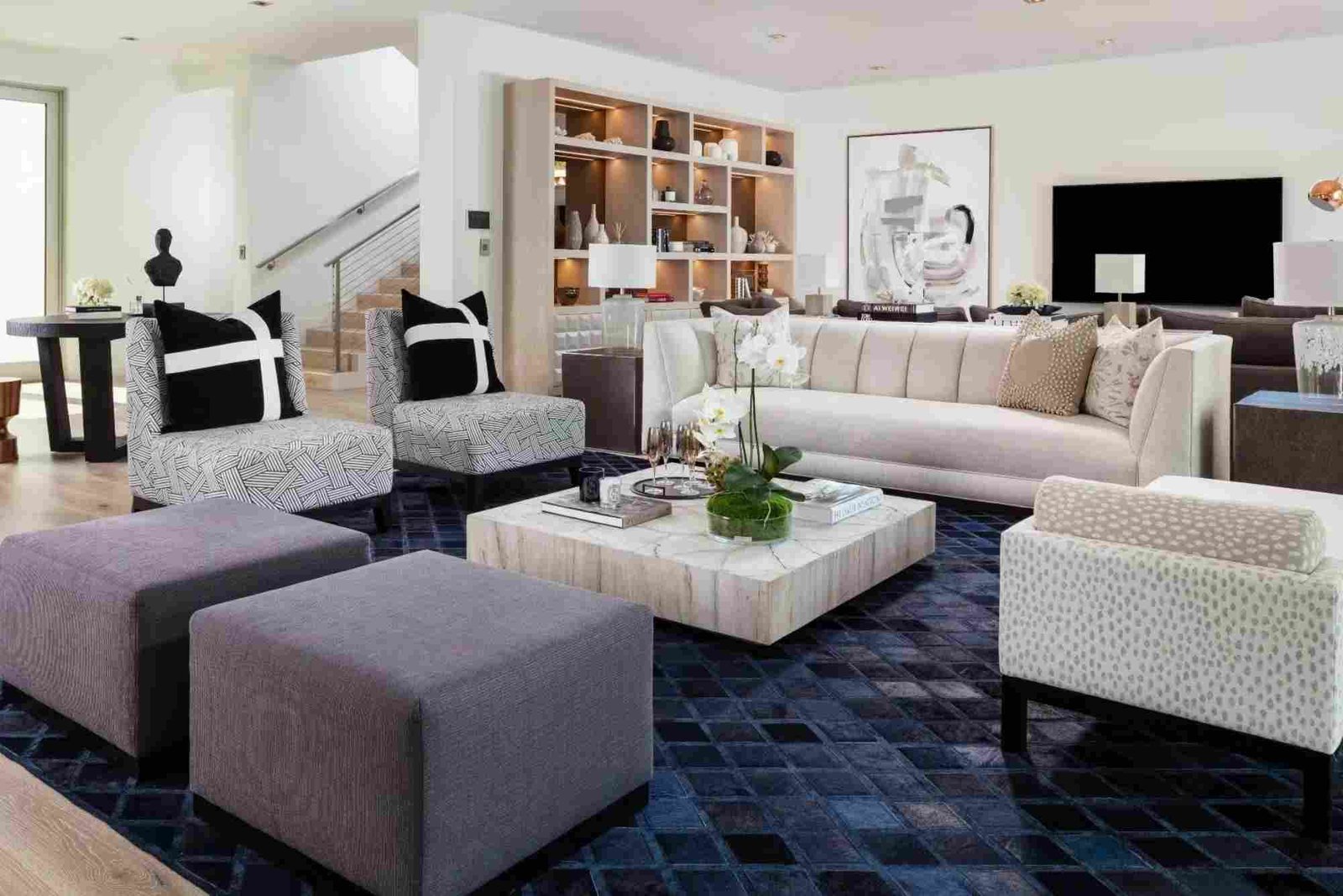In today’s competitive market, businesses are increasingly recognizing the significance of interior branding as a powerful tool for enhancing their brand identity and customer experience. Interior branding involves the strategic use of space, design elements, and visual communication to reflect a company’s values and ethos. By thoughtfully integrating branding into the physical environment, businesses can create immersive experiences that resonate with customers and reinforce brand loyalty.
The Importance of Interior Branding
Interior branding plays a crucial role in shaping how customers perceive a brand. The physical environment is often the first point of contact for customers, making it essential for businesses to communicate their brand message effectively through their interiors. Here are some key reasons why interior branding is vital for modern businesses:
Creating Emotional Connections
Interior branding helps forge emotional connections between customers and brands. When a space is designed to reflect a brand’s identity, customers are more likely to feel a sense of belonging and attachment. This emotional resonance can lead to increased customer loyalty and repeat business.
Enhancing Brand Recognition
Consistent branding across all touchpoints, including interiors, strengthens brand recognition. Customers are more likely to remember and recommend brands that create a cohesive and memorable experience. Interior branding elements, such as colors, logos, and materials, should align with a company’s overall branding strategy.
Influencing Customer Behavior
The layout and design of a space can significantly influence customer behavior. Effective interior branding can guide customers through a store or office, encouraging them to engage with products and services. Strategic placement of displays, signage, and seating can create an inviting atmosphere that enhances the overall customer experience.
Differentiating from Competitors
In a crowded marketplace, businesses must differentiate themselves from competitors. Unique and innovative interior branding can set a brand apart and make it more memorable. Custom-designed spaces that reflect a brand’s personality can attract attention and leave a lasting impression on customers.
Key Elements of Interior Branding
To create an impactful interior branding strategy, businesses must consider various elements that contribute to the overall brand experience. These elements work together to form a cohesive and engaging environment.
Color Palette
Colors evoke emotions and play a significant role in branding. Choosing a color palette that aligns with a brand’s identity can influence customer perceptions and behaviors. For instance, warm colors like red and orange can create a sense of excitement, while cooler colors like blue and green can evoke feelings of calmness and trust. Careful selection and consistent application of colors throughout the space enhance brand recognition.
Signage and Wayfinding
Effective signage is essential for guiding customers through a space and communicating brand values. Clear and visually appealing signage can enhance the customer experience by making navigation intuitive. Wayfinding elements should reflect the brand’s aesthetic and messaging while providing essential information to customers.
Furniture and Fixtures
The choice of furniture and fixtures contributes significantly to the overall ambiance of a space. Custom-designed furniture that reflects a brand’s identity can reinforce the brand message while providing comfort and functionality. Additionally, incorporating sustainable and ethically sourced materials can enhance a brand’s reputation and resonate with socially conscious consumers.
Lighting Design
Lighting plays a crucial role in setting the mood and atmosphere of a space. The right lighting can highlight key areas, create focal points, and enhance the overall aesthetic. Different types of lighting, such as ambient, task, and accent lighting, can be strategically employed to create an inviting and engaging environment that aligns with the brand’s identity.
Artwork and Decor
Incorporating artwork and decor that reflects a brand’s values and story can create a deeper connection with customers. Local artists, cultural elements, and brand-related imagery can add character and authenticity to a space. Thoughtful decoration not only enhances visual appeal but also communicates the brand’s narrative.
Strategies for Effective Interior Branding

Implementing a successful interior branding strategy requires careful planning and execution. Here are some strategies businesses can employ to ensure their interiors effectively reflect their brand identity:
Define Brand Values and Messaging
Before diving into the design process, businesses should clearly define their brand values, mission, and messaging. Understanding the core elements of the brand will guide all decisions related to interior branding. This foundational knowledge ensures that every aspect of the space aligns with the overall brand identity.
Conduct Market Research
Understanding the target audience and market trends is essential for effective interior branding. Conducting thorough market research can help identify customer preferences, expectations, and behaviors. Insights gained from research can inform design choices and create a more tailored and relevant customer experience.
Collaborate with Designers
Working with experienced interior designers who understand the principles of branding can significantly enhance the outcome of an interior branding project. Designers can provide valuable insights and expertise in translating brand values into physical spaces. Collaboration ensures that the final design reflects the brand’s essence while meeting functional requirements.
Maintain Consistency Across Touchpoints
Consistency is key in interior branding. All elements of the space, from color schemes to signage, should align with the brand’s visual identity. This consistency creates a seamless experience for customers and reinforces brand recognition. Regular audits of the physical space can help ensure that branding remains cohesive over time.
Engage Employees in the Process
Employees play a crucial role in delivering the brand experience to customers. Engaging employees in the interior branding process can foster a sense of ownership and pride. Training employees on the brand’s values and how they are reflected in the physical space can enhance customer interactions and reinforce the overall brand message.
Case Studies of Successful Interior Branding
Examining successful examples of interior branding can provide valuable insights into effective strategies and approaches. Here are a few notable case studies that illustrate the impact of interior branding on customer experience and brand identity.
Starbucks
Starbucks is renowned for its exceptional interior branding that reflects its commitment to creating a warm and inviting atmosphere. The use of earthy colors, natural materials, and comfortable seating fosters a sense of community. Each location incorporates local artwork and decor, creating a unique experience that resonates with customers while remaining true to the brand’s identity.
Apple Stores
Apple’s retail spaces are a prime example of minimalist interior branding. The sleek, modern design, combined with a consistent use of white and glass, reflects the brand’s focus on innovation and simplicity. The open layout encourages customer interaction with products, and the incorporation of experiential areas allows customers to engage with technology in a hands-on manner.
Nike
Nike’s flagship stores are designed to immerse customers in the brand’s athletic ethos. Bold colors, dynamic displays, and interactive elements create an energetic atmosphere that resonates with sports enthusiasts. Each store showcases local sports culture and connects with the community, reinforcing Nike’s commitment to promoting an active lifestyle.
Challenges in Interior Branding
While interior branding offers numerous benefits, businesses may face challenges during the implementation process. Identifying and addressing these challenges can enhance the effectiveness of interior branding efforts.
Budget Constraints
Limited budgets can pose a challenge in executing comprehensive interior branding strategies. Businesses must prioritize essential elements that align with their brand identity and customer expectations. Creative solutions, such as repurposing existing furnishings or utilizing cost-effective materials, can help achieve branding goals within budget constraints.
Balancing Functionality and Aesthetics
Striking the right balance between functionality and aesthetics is crucial in interior branding. Spaces must be visually appealing while also meeting the practical needs of customers and employees. Thoughtful design considerations, such as flow and accessibility, should guide the branding process to ensure a harmonious blend of form and function.
Keeping Up with Trends
Interior design trends are constantly evolving, and businesses must stay attuned to changes in customer preferences. While it’s essential to incorporate current trends, businesses should ensure that their interior branding remains authentic to their brand identity. Striking a balance between trendy design elements and timeless branding is key to creating a lasting impact.
As businesses continue to recognize the importance of interior branding, the trend is likely to grow. A well-executed interior branding strategy not only enhances customer experiences but also fosters brand loyalty and recognition. By prioritizing emotional connections, consistency, and innovative design, businesses can transform their spaces into powerful brand experiences that resonate with customers for years to come.




